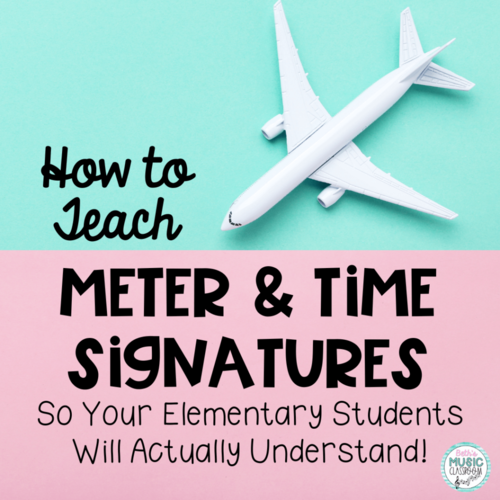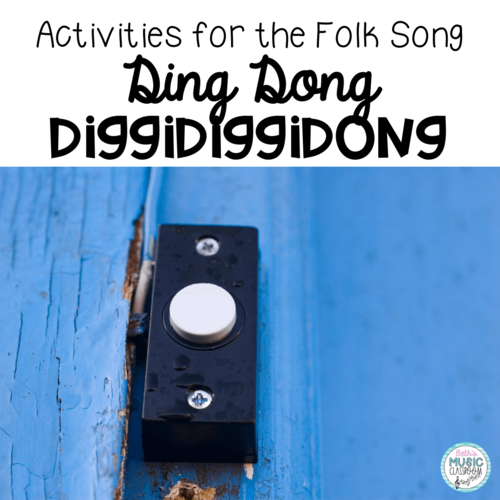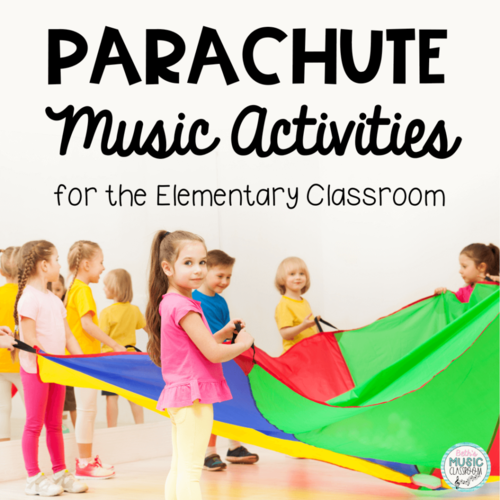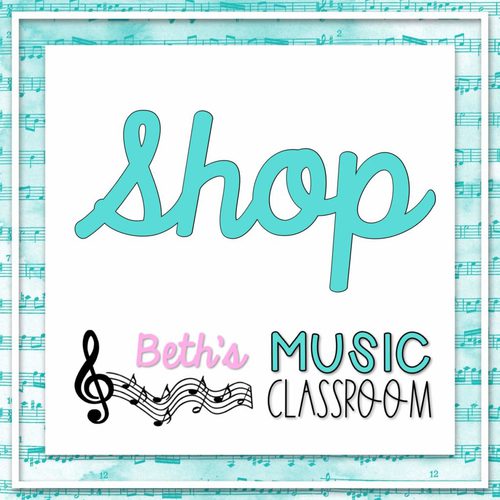
As elementary music teachers, we know how important it is for students to develop a strong foundation in music theory. One of the fundamental concepts is reading melodies and understanding how it moves up and down through steps, skips, leaps, and repeats. While it can seem like a complex topic at first, there are fun and engaging ways to help young learners grasp these ideas. In this blog post, I’ll share some tried-and-true strategies for teaching melodic contour. I’ll give you some practical tips for helping students grasp melodic direction and step, skip, leap, and repeat.
Introducing Melodic Contour
Melodic contour should definitely be introduced in the elementary grades. It’s especially important for 2nd through 4th graders to be introduced to melodic direction and movement on the staff. However, even in 1st grade, you can introduce the concept in a very simple way—focusing on steps and skips within the context of reading so, mi, and la. Let’s look at two ways to introduce a melodic lesson when teaching young students.
Using Real-Life Examples
Before jumping right into melodic contour activities with your students, first, help them relate melodic direction to real life. For example, I start the lesson by drawing some vocal exploration lines and singing the path together. We discuss the direction that it went—up, down, or the same. Then, I introduce melodic contour in simple, child-like ways that they can easily grasp.
Try to find different approaches to help your students understand the melodic direction in a simple, real-life example. If you can help them see, hear, touch, play, and move to match the melody, they will more easily grasp this concept. Here’s a few ways that I’ve helped students do that (some are affiliate links—you pay the same price):
- Moving on a large staff carpet
- Singing and tracing vocal exploration charts
- Using scarves, ribbons, pipe cleaners, or other props
- Walking up and down actual stairs
- Using a small ladder or similar visual example
- Relating to seats in a classroom (my crate seats go in alternating color—like lines and spaces on a staff)
- Looking at a number line (to see alternating odd and even numbers going up and down)
- Listening to a slide whistle or Otamatone
- Listening and watching step bells being played
- Vocalizing to match the path of a beach ball bouncing up and down
I have a specific example to help you plan with ideas from this list. One year, I met my 3rd graders at the stairwell so that I could introduce my melodic contour lesson. I chose one student at first to demonstrate repeats, steps, and even skips (we pretended for the leaps). Next, I had all students choose a number stair, and they realized that it was a lot like math—adding or subtracting numbers. My students very easily related this to real-life (especially when I asked them if they ever skipped or leaped down the stairs when their Mom or teacher weren’t watching). This concrete example made such a difference and helped them during the rest of the unit.
Using Children’s Literature
Secondly, you can introduce melodic contour to younger children by reading a story book. My students love listening to a book, and here’s some great ones that I’ve used for vocal exploration and melodic direction.
- Mortimer by Robert Munsc
- Roller Coaster by Marla Frazee
- La La La by Kate Dicamillo
- The Path by Bob Staake
- Up, Down, and Around by Katherin Ayres
- Up, Up, Down by Robert Munsch
- When Step Met Skip by Vicky Weber
- Gingersnap Snatcher by Vicky Weber
For example, I love using the book Mortimer with my 1st graders each year. I read most of the book to the class, but when the characters walk up and down, we sing “thump, thump, …” as I play the step bells.
Here’s two other great books that weave vocal exploration and melodic direction right into the story and on each page. Gingersnap Snatcher by Vicky Weber is beautifully illustrated with the page as the characters followed their noses to find the cookies. The Path by Bob Staake has paths moving up and down, zig-zagging, weaving, etc. on each page. I love reading these books to my students while they add the vocal exploration shown.
Teaching Melodic Contour: Step, Skip, Leap, and Repeat
Now, let’s dive into the main part of the melodic contour lesson and some strategies for teaching it. Helping students visualize melodic contour is key to deepening their understanding. Here are a few tips to make it come to life in your classroom:
First of all, when beginning the lesson, don’t assume your students remember everything about melodic contour learned in previous years. I always start at a very basic level, reviewing notes moving up and down the staff right at the beginning of the unit. Covid changed a lot about teaching, and the way children and middle schoolers are learning today has been totally transformed. So, I suggest starting out simple, explaining how we read music from left to right, like we read a book. I explain how the notes sit on a staff, sort of like a ladder, moving up and down.
Then I have students make their own staff with their hands (thumb facing down). We count the lines and the spaces from the bottom up—starting with the thumb. Later when I’m looking around to see who “gets it” and who is lost, I have students answer a question on their hand staff.
Even at 2nd and 3rd grade, I teach melodic contour using steps, skips, leaps, and repeats before they ever learn the note names on the staff. I also teach solfege, relating each note in terms of how far it is from the others. For example, do is a step below re and a skip below mi.
Each year with my students, I use a lesson and presentation that helps them define, visually determine, and aurally recognize steps, skips, leaps, and repeats. Each of those three ways are important and slightly different. I want my students to not only be able to sight-read music, but also recognize patterns by ear.
Exciting Activities and Games for Practicing Melodic Contour
After the lesson, find some exciting activities to practice and secure it in their minds. Use games and activities that have them not just recite the definition of step or melodic contour, but that let students play, identify, move, feel, hear, and sing different melodic movements.
Here’s a few that I use in my classroom:
- Staff Hunt: Use blanks staff or a staff carpet visual. Choose two students to stand on any note they choose. The class determines what distance they are apart. Variations: One student chooses any notes. The teacher gives direction to the other student where they should stand (for example, “find the note a skip above your partner”).
- Step-Skip-Leap-Repeat Twister: Use a large carpet with a staff or use tape to create 5 staff lines on a tile floor. With a small group of 3-6 students at a time, each person chooses any note to begin. Set up an online spinner with step, skip, leap, and repeat, plus either up or down. For example, it may land on skip down and right foot. You can make your own personalized double spinner here.
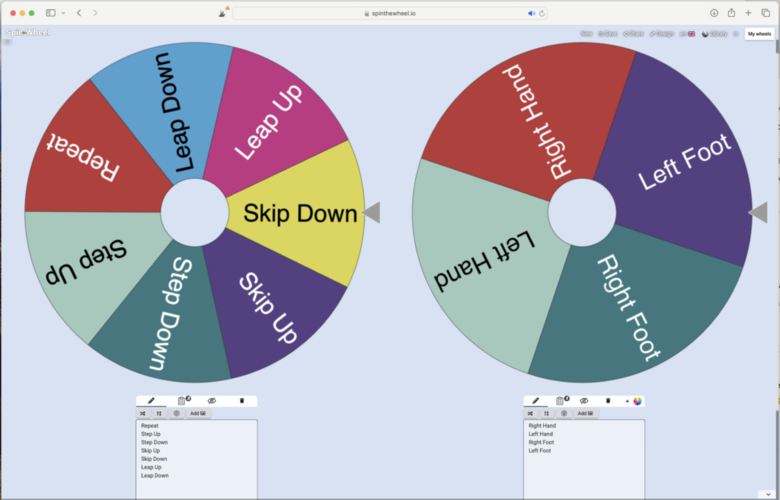
- Partner Playing: Students work with a partner. Give student #1 sheet music for a well-known song. It is their job to tell student #2 exactly what notes to play on the glockenspiel. Once student #1 gives the starting note, they can only use the following words: step, skip, leap, repeat, up, and down.
- Trash-ketball: Add some excitement to any review game by adding a chance to make a basket. Start with 2 lines of students. Have those students identify the interval of two notes shown. The first one to answer correctly gets to try for a basket (or a “trashket”). Correct answers are worth 1 point, and making a basket earns a bonus point. You can also try out an online version of this game here from Music Tech Teacher. Students just love when you add a sports element to any music theory review!
- Interactive Review Games: These games work well for stations, substitute lessons, and virtual day classwork. Students answer melodic contour questions using a Google Slides self-correcting game. They can practice recognizing and hearing intervals and check their understanding during the game. Click here to find one that I love using with my students.
- Online Music Resources: Chrome Music Lab is wonderful for inspiring students to explore sound and pitch. Another great online resource is a set of sound experiments called Creatability. You can check it out here. The following games would be a perfect addition to any melodic direction lesson: Sound Canvas, Seeing Music, and Word Synth.
- Drawing Melodies: Play short melodic examples, and encourage students to draw the shape of the melody that they hear. Students must think about if the melody is going up or down and by how much.
If you’re looking for a resource to use with your next melodic contour unit, check out my done-for-you bundle. It comes with an in-depth presentation, study guide, homework worksheet, practice sheet, and review game. It also includes 3 different versions of a melodic contour test (pre-test for SLO + 2 post-test options—regular and special education versions). With built-in examples and interactive slides, you’ll save time planning while helping your students truly grasp steps, skips, leaps, and repeats in music. Click here to explore it!
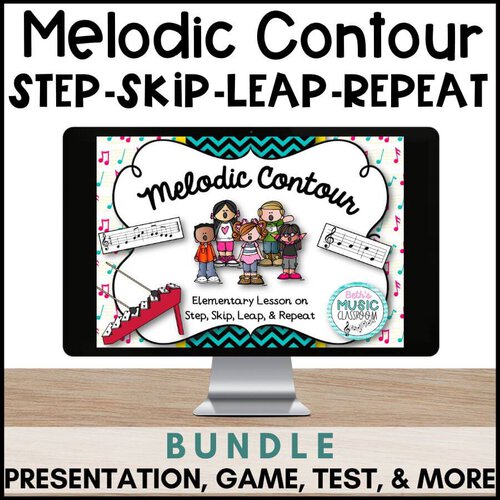
If you get a chance to use any of these activities with your students, I’d love to hear how it went! You can leave a comment below, email me at beth@bethsmusicclassroom.com, or DM me @bethsmusicclassroom.

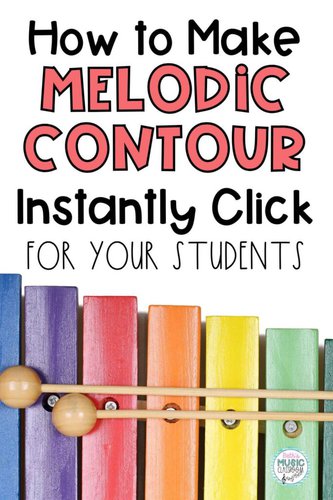
Here’s some other posts you may like.
